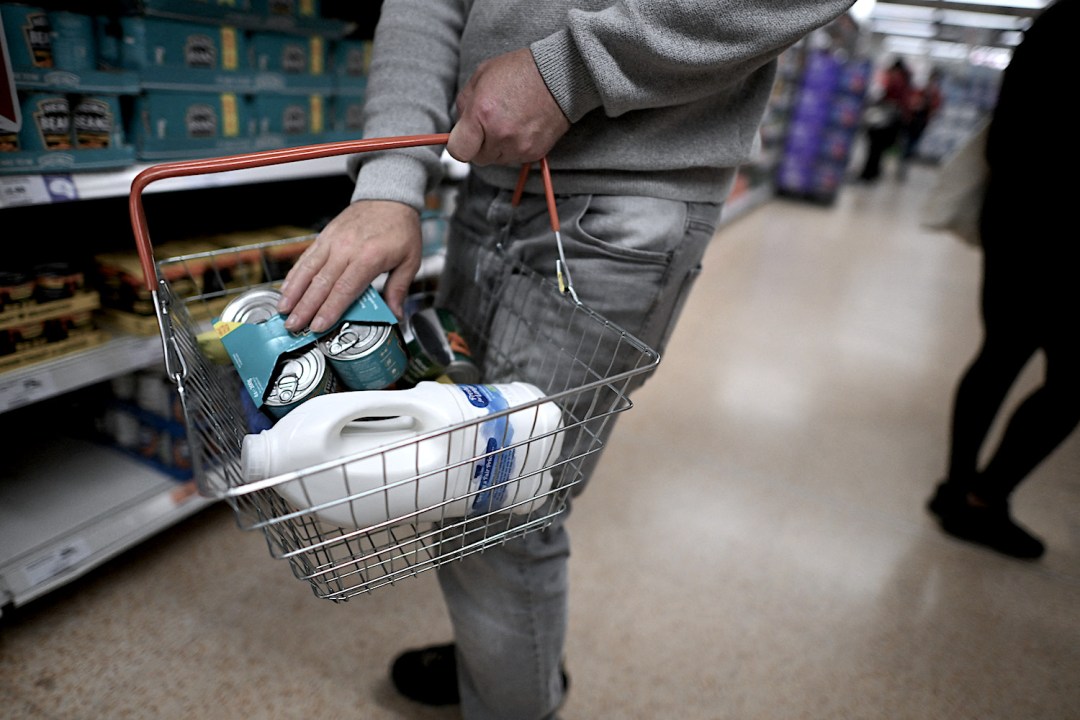Labour MPs are obviously going to panic when told their votes might plunge just one person into poverty – let alone 250,000. That was the original estimate for the fallout from Liz Kendall’s reforms to Personal Independence Payments (PIP) and Universal Credit. Yesterday, the DWP released a revised figure after Starmer caved to a rebellion by 126 MPs. The new number? Some 150,000 pushed into poverty. A marginally better headline, at a £2.5 billion cost to the taxpayer, but still enough to spook Labour’s already jittery backbenches.
Frustratingly, these numbers, put out by the government, are completely meaningless. The government’s chosen metric, ‘relative poverty’, tells us far more about income inequality than it does about the number of people unable to meet their basic needs. Defined as a household income below 60 per cent of the median, it effectively labels more people poor whenever others get richer. So any reform short of a full-blown redistribution of wealth is doomed to fail this test. As the Times’s Tom Calver recently pointed out, this measure would have us believe child poverty is now three times worse than it was in the 1960s, when three million lived in actual slums.
Yes, the DWP’s modelling does also estimate 100,000 more people in ‘absolute poverty’, but even that includes relative income measures. Neither stat even tries to assess access to food, shelter or energy, which is what poverty actually means to most people. But the real sin of the government’s impact assessment? The report explicitly admits: ‘This estimate does not include any potential positive impact.’ Seriously.
What’s the point then? Why produce a model of one side (the negative) of a reform but not look at what the reform is actually aimed at doing? Without looking at the possibility that the impact of the reforms might actually be to encourage and help benefits claimants towards work and hence further away from poverty then you’ve produced a document that serves no helpful purpose other than to assist a rebel whipping operation.
Now, the original assessment of the reforms did include estimates of how many people would come off benefitsm but again states:
This estimate does not include the impact of the £1 billion annual funding, by 2029/2030, for measures to support those with disabilities and long-term health conditions into employment, which we expect to mitigate the poverty impact among people it supports into work.
So the government has carried out this reform without any real estimate of how many people it will get back into work, the supposed goal of the reform. It’s clearly proved very difficult for Labour’s front bench to win the argument without it.
Government is completely infested with this one-sided approach to modelling. We saw it in lockdown when Sage didn’t consider the behaviour response of the population in response to the virus. We saw it with the non dom exodus where the civil servants in His Majesty’s Treasury didn’t bother to consider that a large amount of wealthy taxpayers may look to flee the country in response to being squeezed, as is now happening. We see it in the government’s approach to cigarettes, with one government model working on the base assumption that all policies achieve the desired result.
I’m sure there’ll be some law, regulation or convention that demands the publication of these impact assessments, but it must be within the wit of our civil service to fill them with numbers which are at least balanced if not useful.
Instead, we’ve ended up with MPs understandably freaked out into forcing concessions that create perverse incentives for claimants to stay on benefits which they might no longer need. Why be honest about your improving health or attend a reassessment if you risk having to face a harsher set of criteria if you fall ill again. Forgetting incentives, what possible moral justification can there be for saying: ‘These rules won’t apply to those of you on PIP already, but if you’re diagnosed next year then tough luck! You’re on your own.’
Incentives matter. There is no relationship between the rate of ill health in this country and the explosion in sickness benefits we’re seeing. Wise heads – such as those at the Institute for Fiscal Studies – have looked hard yet found no link with NHS waiting lists either. So the increase in sickness claimants must be explained, at least in part by the incentive structures within the system.
Maybe this is all a technocratic sideshow. Maybe MPs aren’t really reading these assessments. But it’s hard to shake the feeling we’re trapped in a system built to make reform impossible, and governed by MPs too squeamish to try.









Comments